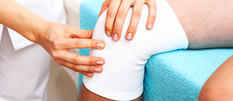Sports Injury Management and Rehabilitation
At NorthWest Physio + our aim is to support you into getting back to full fitness so that you can continue enjoying the sport you love.
Early intervention makes all the difference in your rehabilitation and recovery.
Early intervention makes all the difference in your rehabilitation and recovery.


